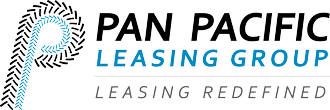Singapore has pledged to reduce its Emissions Intensity (EI) by 36 percent by 2030, which is an ambitious target. It would require concerted efforts by the government, businesses, households, and individuals.
One of the fastest and most effective ways to reduce your carbon footprint as an individual and business is to switch to Electric Vehicles (EV) for your business. Carbon footprint is the total amount of greenhouse gases generate by an individual or organisation. Greenhouse gases are gases in the atmosphere that trap earth, causing global warming and subsequently, climate change.
Besides helping in the concerted efforts to reduce emissions, switching to electric vehicles has a real benefit to your business. With the price of oil continuing to hike, it is a no-brainer to make the switch to EV. As oil is not a renewable source of energy, the oil price is only going to go upward. EVs on the other hand, use lesser to no fuel with batteries being able to charge even with a home charging unit at a fraction of the cost. In the long run, you will be saving cost for your business vehicle in Singapore by switching to EVs.
Electric vehicles have fewer moving parts, so the cost of maintaining the vehicle is greatly reduced. Battery EVs have no petrol engine and so do not need oil changes; spark plugs or timing belts. The main consumables involved are tyres, air conditioning, brake pads. Due to the nature of EV vehicles, they are more low maintenance than traditional petrol-powered cars. This means less downtime for your business due to vehicle maintenance and breakdowns.
As a business owner, using an EV in Singapore can be great brand image marketing. Consumer attitudes today are shifting to ones that are increasingly conscious and emphasise sustainability practices to minimise their carbon footprint. Paired with the Singapore government’s Green Plan, your target audience will be more educated on their carbon footprint and supporting a business that actively works on reducing their carbon footprint is a great way to support our government’s Green Plan.
Switching to an EV for your business in Singapore not only helps you reduce your carbon footprint, it also saves you cost in the long run and improves your brand image in a world that’s more environmentally conscious. At Pan Pac, we have introduced a range of EVs in Singapore for leasing to help businesses reduce their carbon footprint.
Give our friendly team a call today at +65 8482 3003 to find out more or email us at sales@panpacificleasing.com.sg
